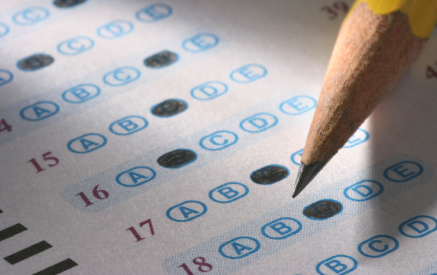If you struggle with the Reading section of the ACT or the SAT, you’re not alone. The Reading section of the exams involves a lot of interpretation and understanding. It’s not like the Math section where you know answer B is clearly wrong. Math may be black and white, but Reading is not.
In order to succeed on the SAT and the ACT, you need to have a strong composite score. If you score low in one section, it could dramatically effect your overall score. So, take some time to brush up on your weaker sections.
And, if your weaker section happens to be Reading, try these five steps to improve your score:
Step #1 — Read
You have heard it from your parents and your teachers. You’ve read it online. Well, guess what? It’s true.
The easiest way to improve your score on the Reading section is to do just that — read. The more time you spend on reading, the more familiar you will become. Don’t read for speed. Read for comprehension. Put down your cell phone and pick up a newspaper, a magazine, or a textbook. Read a few paragraphs and try to answer some basic questions:
What is the main idea?
What is the author’s message?
Summarize the article/story in 2 – 3 sentences.
Step #2 — Practice
Spend some time taking practice Reading tests for the SAT and the ACT. You can find free practice tests online and most test prep books come with at least one or two. Do a web search for places near your home that offer free practice tests — like your local library. (For Cleveland families, check out the Cuyahoga County Public Library. They have lots of great resources for college-bound families.)
Don’t just say that you’re going to practice. Plan for it. Dedicate at least two nights a week where you will sit down and practice for the Reading section. Even if it’s only for an hour. Stick to your plan and commit to it. If you’re afraid you won’t study, ask your parents or friends to remind you.
Step #3 — Pace Yourself
It is important to practice pacing for both exams. You have a limited amount of time to complete each section and you do not want to waste it.
The best way to practice pacing is to grab a timer and see how long it takes you to complete a practice section. Remember, don’t just read for speed. Read for content. Record your time and see if you can beat your own score.
Step #4 — Develop a Strategy
Some people will tell you it’s best to read the story first. Others insist on reading the questions first. Both of them are good strategies and they can both be effective with the right student. As you continue to practice, you will learn whether you are better reading the story or the questions first.
Here is a tip for both theories:
Read the Story First — As you read, underline important thoughts and details. Summarize each paragraph in one sentence in the margin. This way, when a question refers to a specific detail, you will know where to look.
Read the Answers First — After reading the question, scan the paragraph to look for details. You’re not reading the paragraph, but meerly searching for where to start reading. (This is difficult for questions like “What is the main idea?”)
Step #5 — Choose Your Order
There is no rule on either test that says you must read the passages in order. Take a look at the section. You may have strength in scientific paragraphs, but struggle with English literature. Do the easier paragraphs first to save time. (Be sure you’re marking the correct bubbles!) Once you pick a section, decide if you’ll read the story first or the questions. If you have time remaining, move on to the harder passages.
Still need help? North Coast Education Services provides personalized SAT and ACT test prep. We also offer SAT and ACT classes at Lakeland Community College. (Our new semester starts March 31st!) Click here for more information on our test prep services!



